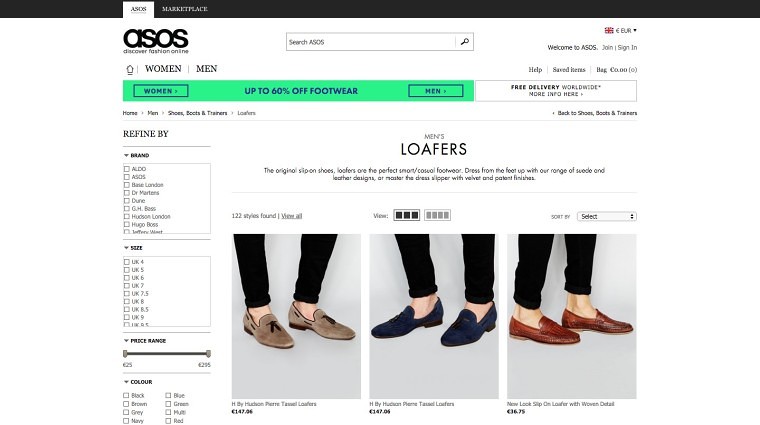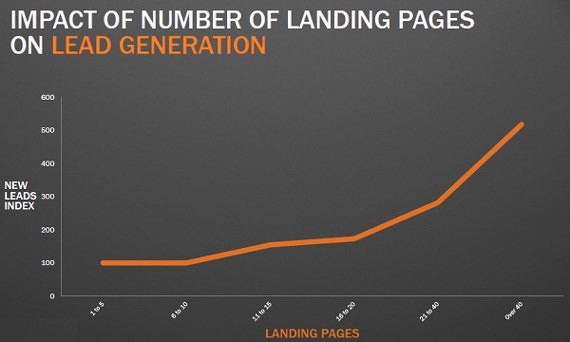In the last few years, conversion optimization has emerged as the primary field for investment in online marketing, and professionals across all industries have discovered that putting effort into it can yield high returns.
However, more and more professionals are starting to realize that focusing only on one detail (such as page copy or design) is limiting. That’s why most experts and organizations are making a shift toward optimizing the experience of customers across all interactions with the brand–both online and offline. This has given rise to the relatively new field of experience optimization.
Although it makes use of statistics, hypothesis testing, and other tools for empirical validation, conversion optimization is not an exact science; there’s no secret formula you can take and apply across your site.
Still, there are best practices that can help you get started on the right foot and avoid the most basic mistakes. In this post, you’ll find five of the more important optimization techniques that are universally applicable, no matter what type of business you’re running.
#1: Optimize Across All Touchpoints
Think about all the interactions your customers have with your brand. They come to your website. They read your social media updates. They receive your emails. They meet you in person at conferences and trade shows. They might even call you on the phone and speak to you.
Are you providing a consistent experience across all these platforms? Are you making promises on one and not delivering on them on the others?
Start the experience optimization process by mapping out all touchpoints (or interactions) a customer can have with your brand. Then audit all of your actions across those interactions. When you complete this process, you’ll have an excellent basis to start optimizing these experiences consistently.

Use Personalization Strategically
Simply using your customers’ first names in your next email campaign won’t do the job. Nowadays, this kind of personalization is so rudimentary that no one will feel impressed by it.
The advances in our ability to collect, store, and quickly analyze large amounts of customer data, together with the cheap access to new analytics technology, means we now have a much better ability to provide personalized experiences to customers.
First, invest your time in finding out as much as possible about your customers. Then, set out to fulfill these needs and give them valuable information in the context where they would be most likely to consume it. This could be as simple as a basic drip campaign in MailChimp, or something much more complicated using advanced analytics, segmentation, and automation software.
Align Messaging Across Platforms
Always keep in mind the people behind the numbers you’re trying to improve. Your customers expect a consistent experience from your brand. For example, one of the most widespread mistakes with paid advertising is to use one message for an ad, but then show a completely different value proposition on the landing page:
 A search for “WordPress hosting” yields this page among the paid results…
A search for “WordPress hosting” yields this page among the paid results… …but there’s no mention of anything WordPress-related on the landing page
…but there’s no mention of anything WordPress-related on the landing pageIn an optimized experience, the user’s interest is piqued with an intriguing offer, and he or she is quickly convinced by a follow-up experience that delivers on the initial promise:


#2: Adopt a Data-Driven Mentality and Test!
If you want to succeed with conversion optimization, you have to become comfortable with collecting, analyzing, and understanding data, and then make decisions based on it.
However, in order for this testing to be meaningful, you have to know how to do it well.
Learn How to A/B Test
A/B testing is an art unto itself, so doing it correctly is an imperative step toward attaining success with your optimization campaigns.
Knowing what to test, how long to test, when to trust the numbers, and when to run another test is essential. Research and explore some of excellent online resources and tools before you start testing, including Optimizely, Visual Website Optimizer (VWO), and Hotjar.
#3: Use Multiple Landing Pages
Landing pages are an essential element in the personalization of your business’s offerings to the different customer segments you serve. They allow you not only to offer a customized product/service, but also to use different language and messaging.
Additionally, they’re great for your SEO efforts, allowing you to target key terms you’re probably missing on your homepage.
Research conducted by Hubspot shows conversion rate tends to improve exponentially with the number of landing pages you use:

When you want to build landing pages for your website, start with your target customers. Use data you’ve obtained from surveys and conversations with existing customers to understand the problems they have. Pay close attention to the language they use.
Next, start creating a template for your landing page. With the information you’ve collected from your customers, you’ll know what questions to answer on the page and, perhaps even more importantly, what language to use.
However, when adopting this tactic, make sure the landing pages you create are at least 90 percent unique, especially in terms of the copy used. Otherwise, you risk having your site marked for using duplicate content, which might result in a penalty by search engines.
#4: Don’t Let Forms Become a Conversion Killer
If you’re operating any kind of business online, there’s no way you won’t run into the need to use web forms. They’re great for collecting visitor information, but they should be treated with extreme care since they can ruin the conversion of your website.
Keep Forms as Short as Possible
In general, always aim to have the lowest possible number of fields on a form. What this number is depends on many factors, including what industry you’re in and what your goal is for each form/conversion. For example, if you’re using your corporate blog to collect emails, do you really need more than one field (email) on your form?
Progressive Collection
You can collect information about your visitors progressively if you know they’re likely to come back to your site. Ask them for the minimum amount of information you need when they first sign up, then try to get additional information from them on successive visits.
Hubspot provides an excellent example of this with their downloadable resources. The first time you want to download an asset, they ask for only the most necessary information – your email and name – so they can pitch you other resources in the future. Then, each time you want to download another white paper or a set of Excel spreadsheets, they can get additional information about you and your business, from what industry you operate in, to the size of your company.
#5: Reduce Distractions
Too often you’ll see landing pages with hundreds of options – main menus with drop-down submenus, numerous links to social media, case studies, and so on.
Most businesses do this, thinking that providing their audience with more options makes it more likely to turn visitors into customers. The reality is that the more distractions you provide, the easier you make it for users to drop off at some point.
Every marketing asset you use should always have a clear end goal for each visitor who sees it. If you want visitors to make a purchase on a certain page, don’t give them the option to subscribe to your email list or download a white paper – this will distract them and give them an excuse to postpone making a painful decision (spending money always involves an internal struggle).
The conversion experts at Unbounce do a great job of reducing distractions on their landing pages:

Notice how focused the entire page is. Every element – from the copy to the images to the design – leads the visitor to complete the main goal, which in this case is to sign up for their free course.
Conclusion
Obviously, this post only scratches the surface of conversion optimization. It’s a vast area of digital marketing and one that few people truly master.
However, if you remember only two things from this article and apply them consistently in your optimization efforts, chances are you will be successful:
1. Invest in Learning as Much as Possible About Your Audience
Success with conversion is largely driven by personalization, so naturally the more you know about your customers, the better you’ll be at providing them with a customized experience across all interactions you have with them.
Don’t be afraid to invest both time and money into this, as it’s one of the factors that can have the biggest impact on ROI.
2. Always Be Testing
The truth is that no marketing expert knows for sure what will work. On the contrary, the best marketers are those who accept their limitations and keep an open mind about finding out empirically what the best approach is to any given challenge.
Adopt that same mentality – you should always have multiple tests running across your marketing channels. Spend time (and maybe even money – although there are many great resources that are free) to learn how to test effectively and take advantage of your newfound power.
Featured image: Shutterstock
Landing page graph: Hubspot, attribution approved under their content usage guidelines
All screenshots taken by Alexander Kesler, December 2015





